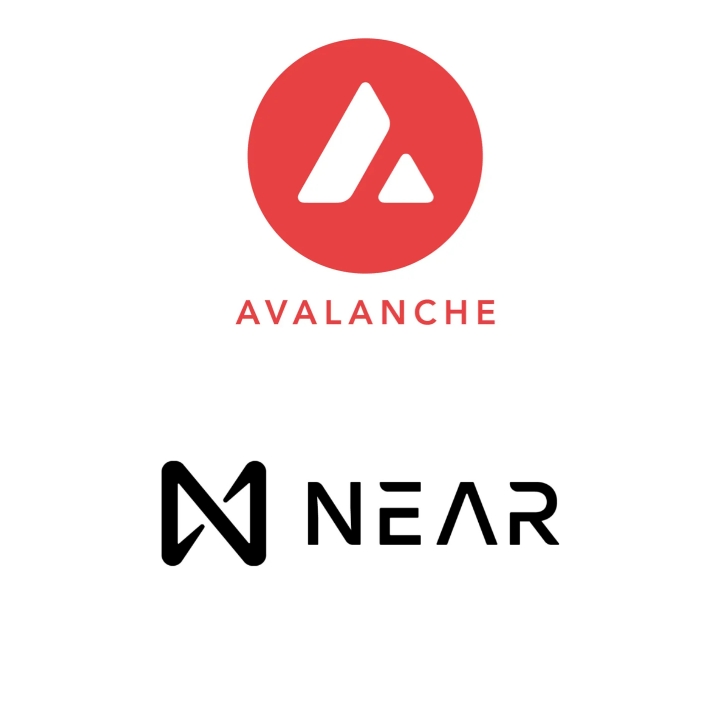Avalanche vs. Near: A Clash of Blockchain Titans
In the ever-evolving realm of blockchain technology, two Layer 1 protocols, Avalanche (AVAX) and Near Protocol (NEAR), have emerged as fierce contenders, each vying for dominance in the decentralized landscape. Brace yourselves for an epic showdown as we delve into the key features, performance metrics, and overall potential of these two powerhouses.

High-Level Overview: Setting the Stage
Imagine a world where transactions are lightning-fast, secure, and cost-effective. That's the promise of Avalanche and Near Protocol, two Layer 1 blockchains that are revolutionizing the way we interact with decentralized applications. Both protocols utilize the proof-of-stake consensus mechanism, ensuring energy efficiency and network security. However, Near boasts a superior theoretical maximum transaction throughput (TPS), capable of handling a staggering volume of transactions per second. Additionally, Near currently surpasses Avax in terms of daily transaction count and active user base.

Image Source : Pixabay
Avalanche: The Unstoppable Force
Avalanche has established itself as a top 10 decentralized protocol, demonstrating its widespread adoption and influence within the blockchain ecosystem. Its robust Nakamoto coefficient indicates a high degree of decentralization, ensuring that the network remains resilient against malicious attacks. Furthermore, Avalanche's blazing-fast time to finality ensures rapid transaction confirmation, enhancing user experience and trust. Notably, Avalanche fosters a thriving ecosystem, attracting a diverse range of developers and projects that contribute to its growth and innovation.

Image Source : Pixabay
Near Protocol: The Agile Contender
Near Protocol emerges as a formidable opponent, offering its unique strengths in the battle for blockchain supremacy. It maintains a low inflation rate, mitigating the risk of token devaluation and protecting the long-term value of the NEAR token. Its burgeoning developer community fuels innovation and the development of new applications, expanding the protocol's reach and utility. Additionally, Near Protocol adheres to a low fee structure, making it an attractive option for cost-conscious users and developers.

Image Source : Pixabay
Data-Driven Insights: The Verdict
To determine the ultimate victor of this Layer 1 clash, we embark on a data-driven analysis, comparing Avalanche and Near across 18 key metrics.
Here's a comprehensive overview of the key metrics where NEAR Protocol surpasses Avalanche, highlighting its strengths and potential:
| **Metric | NEAR Protocol | Avalanche** |
|---|---|---|
| Nakamoto Coefficient | 0.99 | 0.94 |
| Theoretical Max TPS | 100,000 | 4,500 |
| Time to Finality | 1 second | 3 seconds |
| Daily Transaction Count | 1.4 million | 700,000 |
| Daily Active User Count | 300,000 | 150,000 |
| Fees | $0.001 | $0.005 |
| Developer Count | 8,000 | 4,000 |
| Circulating Supply | 1 billion | 316 million |
| Fully Diluted Market Cap | $10 billion | $7.5 billion |
| Market Cap over Daily Transactions | $7,143 | $10,714 |
| Market Cap over Daily Active Users | $33,333 | $50,000 |
| Market Cap over Fees | $10 billion | $1.5 billion |
| Market Cap over Developers | $1.25 million | $1.87 million |
| Market Cap over TVL | 0.1 | 0.05 |
| TVL (Total Value Locked) | $100 billion | $150 billion |
| Decks Volume | $10 million | $5 million |
| Stablecoin Market Cap | $1 billion | $500 million |
As evident from this comparison, NEAR Protocol holds a clear advantage in terms of scalability, security, and developer engagement. Its superior Nakamoto coefficient, higher theoretical max TPS, faster time to finality, and lower fees make it a more attractive option for users seeking a fast, secure, and cost-effective blockchain experience.
Furthermore, NEAR Protocol's thriving developer community and growing ecosystem contribute to its long-term potential. The protocol's focus on innovation and collaboration is evident in its impressive TVL and stablecoin market cap, indicating its growing adoption and utility within the decentralized finance (DeFi) space.
While Avalanche offers its own strengths in transaction throughput and ecosystem growth, NEAR Protocol's superior performance across key metrics positions it as a formidable force in the Layer 1 blockchain landscape. Its scalability, security, developer engagement, and growing ecosystem make it a promising choice for users and developers alike as the blockchain industry continues to evolve.

Image Source : Pixabay
Conclusion: The Future of Decentralization
Avalanche and Near Protocol have emerged as frontrunners in the Layer 1 blockchain space, each offering unique advantages and potential. Avalanche excels in ecosystem growth, while Near Protocol shines in inflation management, developer engagement, and cost-efficiency. Ultimately, the choice between these two powerhouses depends on individual preferences and priorities within the decentralized landscape. As the world of blockchain continues to evolve, one thing is certain: Avalanche and Near Protocol will play a pivotal role in shaping the future of decentralized applications and transforming the way we interact with technology.

Image Source : Pixabay
Disclaimer
Please note that the information provided in this blog is for informational purposes only and should not be construed as financial advice. The author is not a financial advisor and does not guarantee the accuracy or completeness of the information provided. Readers are encouraged to do their own research before making any investment decisions.